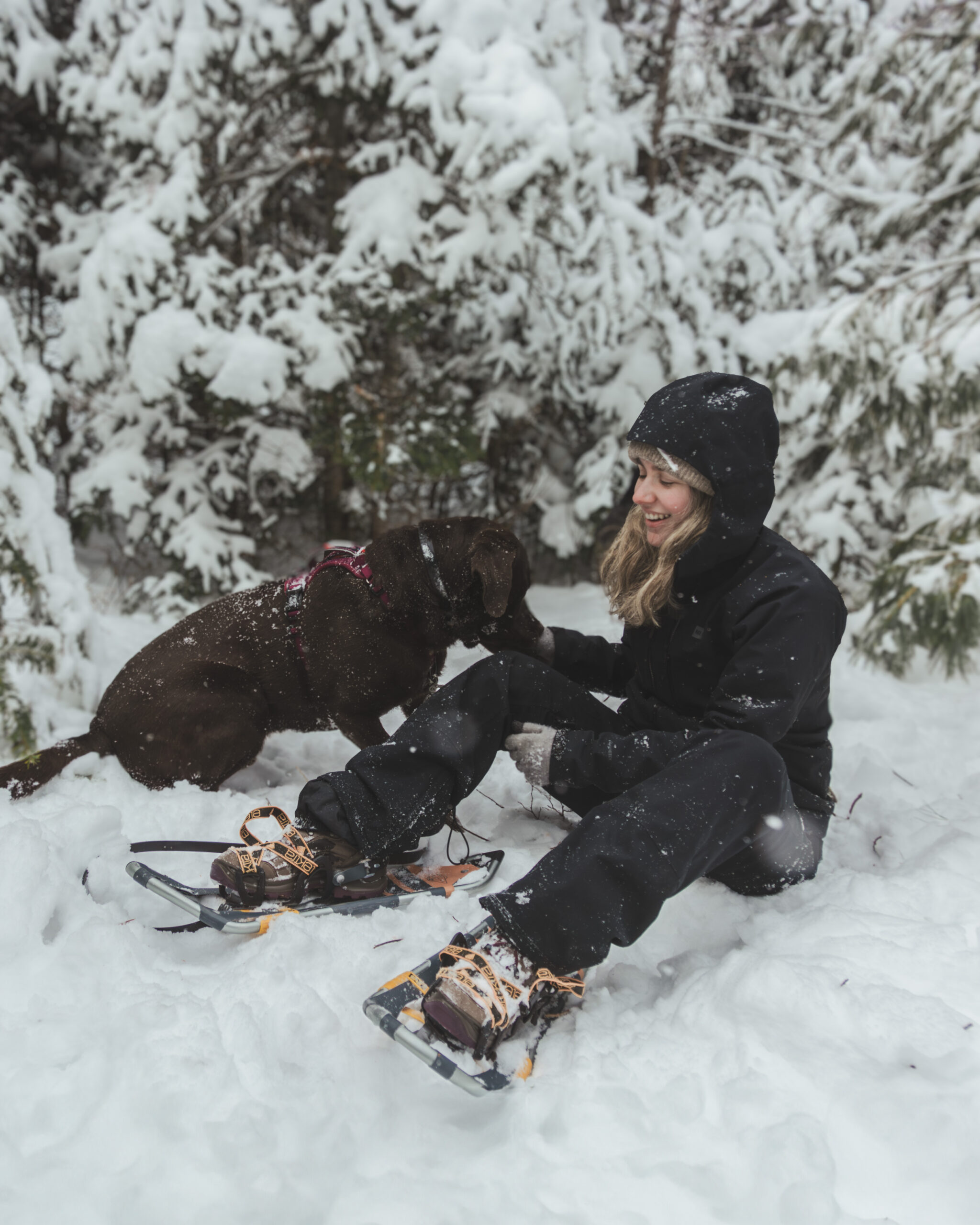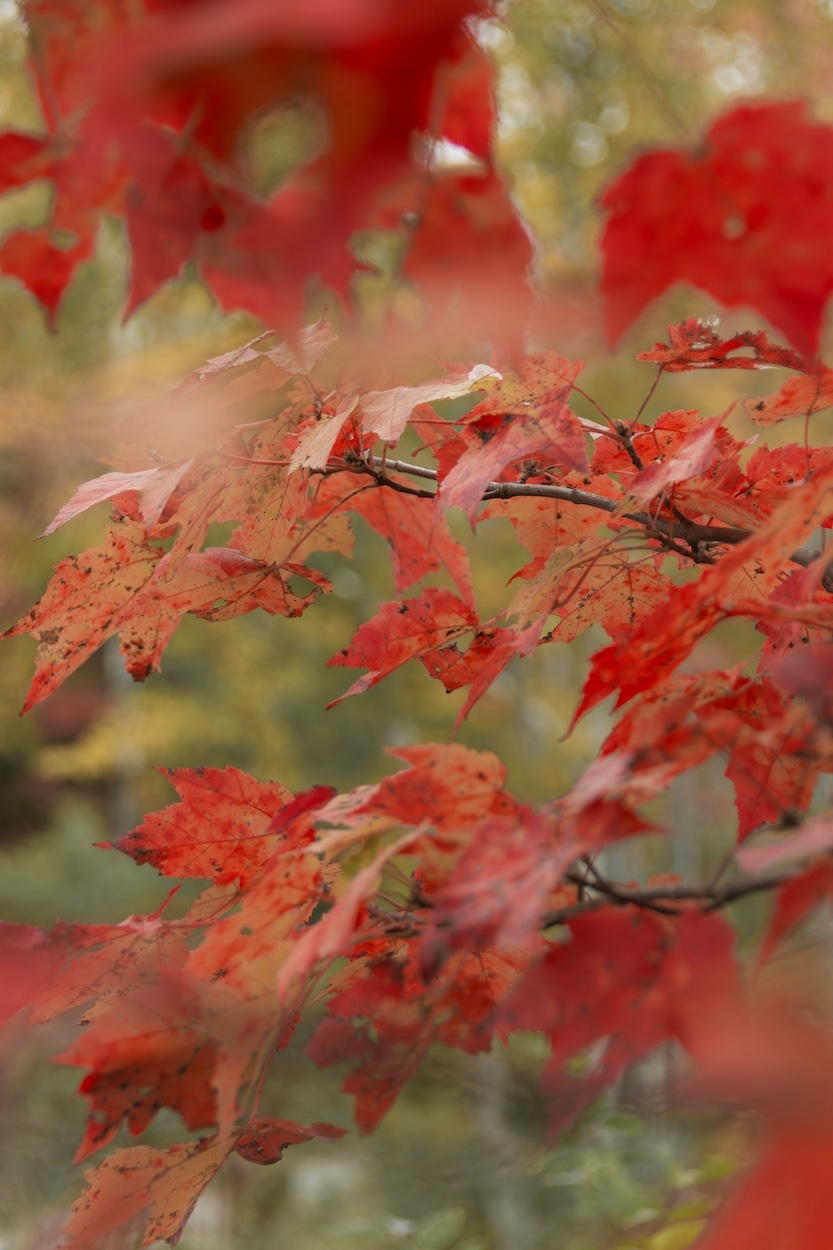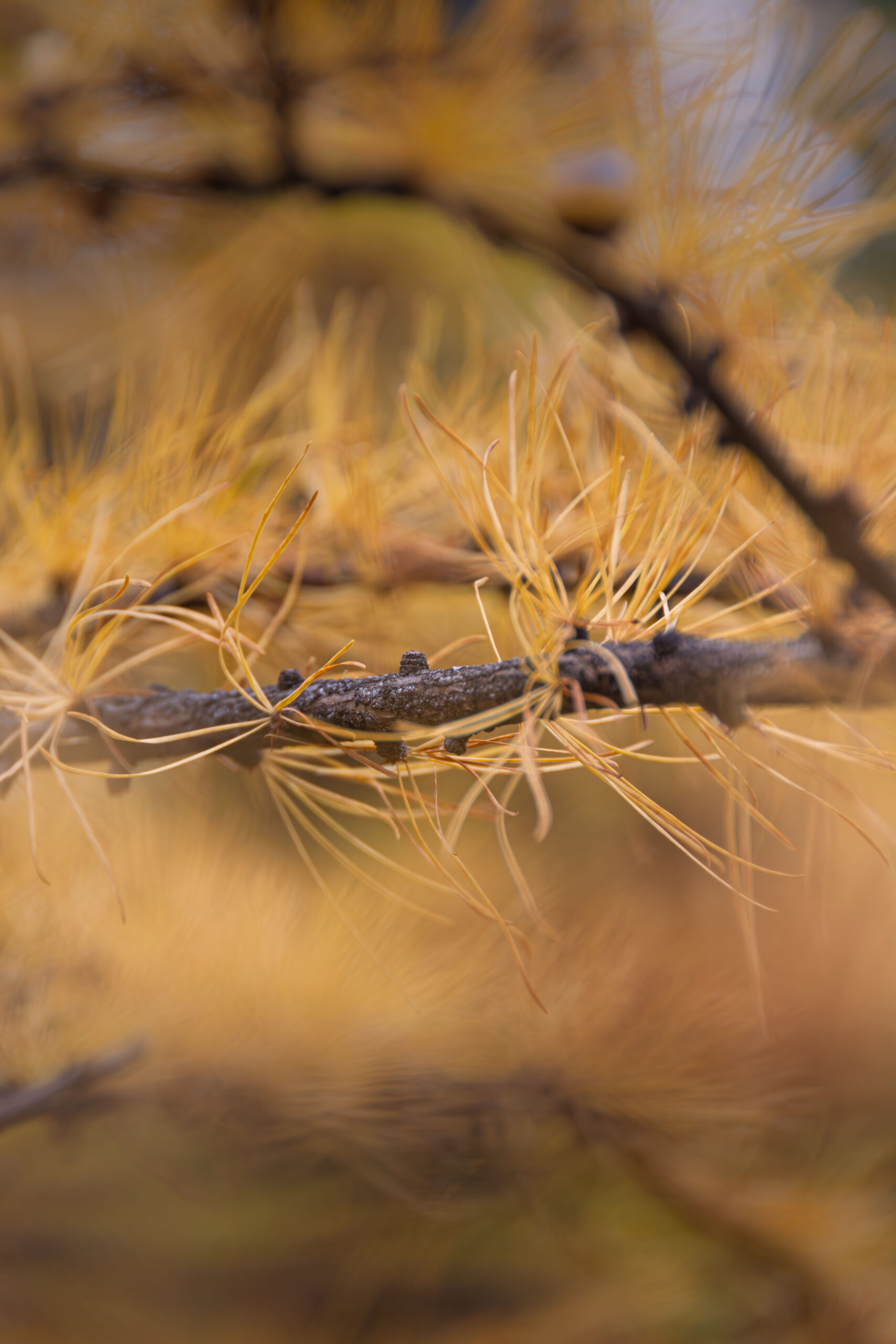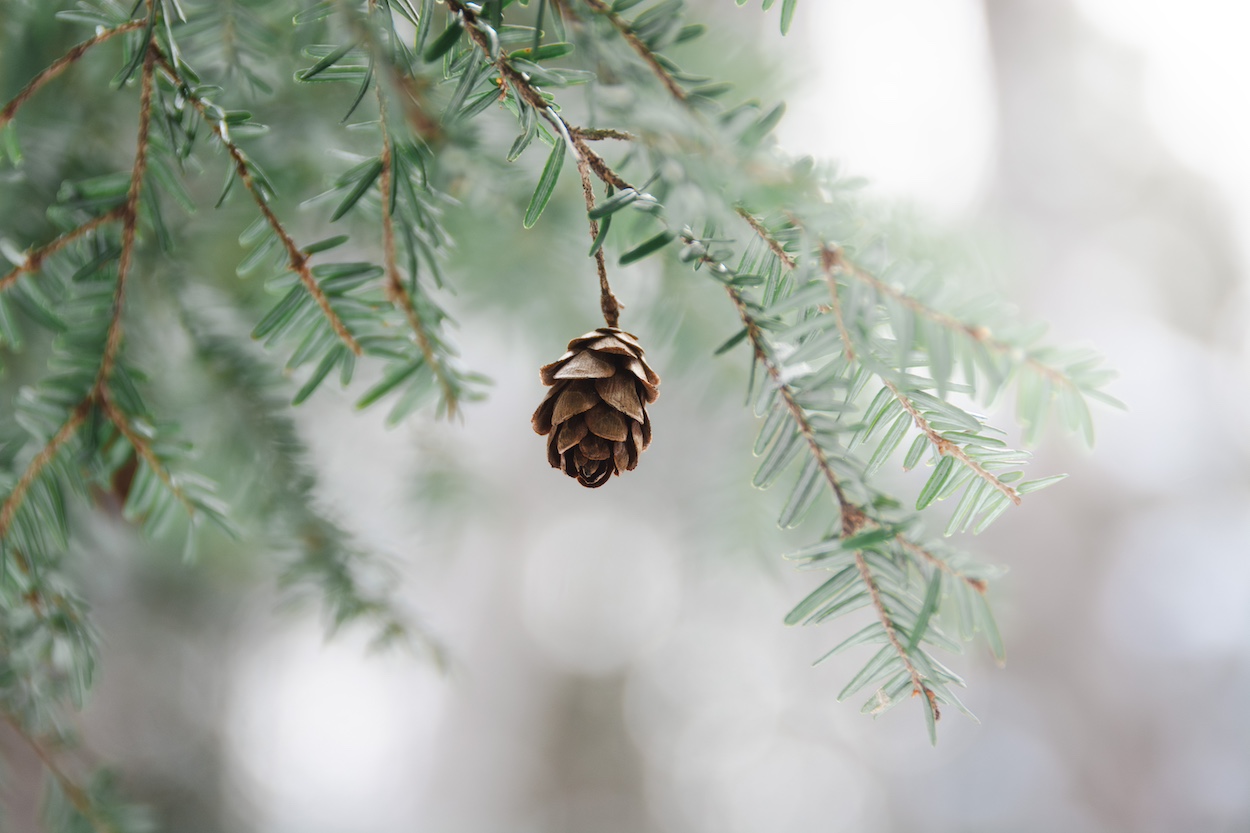It’s cold. Really cold. -22 °C. I’m out snowshoeing with my Labrador retriever, Moose. Dressed in several layers, I cinch my hood tightly to shield from the wind. Moose is still young and never seems to mind the cold. Excited for our little adventure, his gait is more of a frolic than a walk.
It’s peaceful out here. We’re not far from town, but in the quiet of this snow covered forest, we feel many miles away. All around us, the trees stand strong and proud. Last night, they withstood a -40 °C windchill. The icy wind shook the evergreens clean of snow, but again their limbs bend gently under its weight.



It’s hard to fathom how anything can survive out here on such a cold night, but these eastern trees do it year after year, enduring harsh winter hurricanes, frozen ground, and ice covered limbs.
Winter Tree Survival
The trees of the Wabanaki/Acadian forest are amazing in their adaptability. They withstand extreme temperature fluctuations, going from hot summers to long cold winters. The winters are especially challenging as they contend with less light, limited water, freezing cells, and heavy snow. Here’s how they do it:
Dormancy
Deciduous and evergreen trees share similar strategies when it comes to winter survival. Both enter a state of dormancy, reducing their metabolic activity. A plant’s metabolism includes all the chemical reactions that keep it alive and growing. You can think of dormancy as a deep sleep for trees, helping them to conserve energy and resources until fairer conditions return in spring.
Deciduous Trees Shed Their Leaves
As part of their dormancy, deciduous trees shed their leaves to conserve energy and water. The process is called abscission and is triggered by environmental cues like decreasing daylight and cooler temperatures. In fall, trees begin to break down and reabsorb the nutrients contained in their leaves. Chlorophyll, the green pigment responsible for photosynthesis, is rich in nutrients. As it breaks down, the green colour in leaves fades, unveiling other pigments that create the vibrant fall colours we know and love.1


Cork cells also form in preparation for leaf shedding. They act as a protective barrier from bacteria, fungi, and water loss, once the leaf separates from the branch. The actual separation happens when specialized cells in the “abscission zone” make enzymes that attack and destroy cell walls.2 Once the cell walls are destroyed, the leaves fall to the ground.
Evergreens Maintain Their Leaves
While deciduous trees shed their leaves to conserve water and energy, most conifers are adorned with green all winter long. As long as they have water and remain unfrozen, evergreens can carry on with photosynthesis. This extends their growing season, but conditions suitable for photosynthesis are hard to come by in winter.3

Leaf retention is less about photosynthesis and more about weighing energy expenditure. Evergreen trees retain their leaves because it’s more energy-efficient than shedding and regrowing them.4 This is partly due to their leaf structure. Needle-like leaves have a small surface area and a waxy coating that help reduce water loss through transpiration.5 This helps conserve water in subzero conditions.
Sweet Sweet Antifreeze
Freezing is another obstacle trees must overcome. When water in living cells freezes, ice crystals can damage cell membranes and vital structures. The outer bark of a tree, the periderm, provides some initial protection against the cold. Periderm cells, being already dead, can freeze without harm. But, this barrier is not enough, so trees have come up with another way to stave off the cold: antifreeze.
When temperatures begin to plummet in fall, “trees convert starches to sugars, which act as a natural antifreeze.”6 These sugars lower the freezing point of water inside the cells, preventing the formation of ice.6 When spring approaches, the same sugars that acted as antifreeze in the tree’s cells contribute to the sweetness of maple syrup – yum!
Many conifers also produce resin which acts as an antifreeze in leaves, and some trees produce antifreeze proteins. Antifreeze proteins attach to ice crystals, preventing them from growing larger and forcing them to take on a hexagonal shape instead of the damaging needle-like structures that can harm cells.7
Snow Accumulation
Since evergreens maintain their leaves, they must also find a way to shed excess snow. Their cone-like shapes help snow slide off their branches, preventing harm from snow accumulation.
Wildlife Benefits
Back in the forest, I can see evidence everywhere of how wildlife have come to rely on these winter adapted trees. Chickadees and nuthatches sing from the protective cover of evergreens. Snowshoe hare tracks disappear into a thicket of balsam fir. Sap wells form neat rows on an eastern hemlock. A squirrel midden litters the clean white snow. And a large impression reveals a daytime resting spot for white-tailed deer beneath a cedar tree.

Hidden from sight, beneath the snow, voles, shrews, and field mice snack on bark, seeds, and leftover vegetation. The leaves from fallen deciduous trees provide nesting materials and cover for small animals and insects. Throughout the forest, it’s clear how important winter tree survival is for wildlife, providing both food and shelter.
Conclusion
I hope the science of winter tree survival has given you a renewed appreciation for the resilience of Wabanaki/Acadian forest trees. If you get a chance this winter, put on some snowshoes and go explore your local forests.
If you want to ensure the protection of these wild places, you can check out local conservation organizations and ask how you can get involved or donate:
Protecting the Wabanaki-Acadian Forest on Price Edward Island
Conservation Council of New Brunswick
As always, if you have any questions or comments leave them below!
Related Posts
A Hidden World Beneath the Snow: Exploring the Subnivean Zone
Acadian Forest: History, Species, and Biodiversity
Eastern Canada’s Edible and Medicinal Trees
Tree Lungwort (Lobaria Pulmonaria)
Sources
1 Julie Crick. 2014. “Trees Avoid Damage From Freezing Temperatures: Part 1.” Michigan State University Extension.
2 Fernando Gomollón-Bel. 2016. “The Chemistry of Autumn.” Royal Society of Chemistry.
3 Quirks and Quarks. “Which Trees Provide the Most Oxygen Over the Course of a Year, Deciduous or Evergreen?” CBC.
4 Barry Logan. 2019. “Why Don’t Evergreens Change Colour and Drop Their Leaves Every Fall?” The Conversation.
5 Let’s Talk Science. 2020. “How Do Trees Survive in Winter?”
6 “What Do Trees Do in Winter?” Purdue University Forestry and Natural Resources.
7 Andy Brunning. 2017. “How Do Evergreen Trees Stay Green?” Chemical and Engineering News.